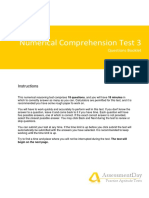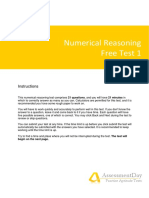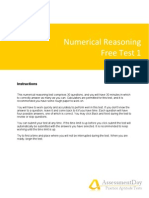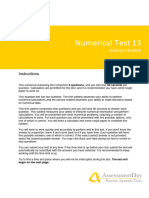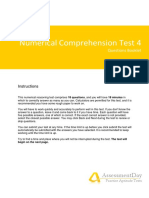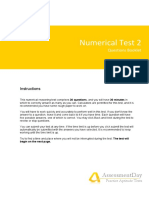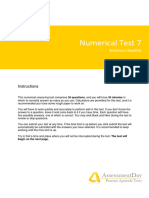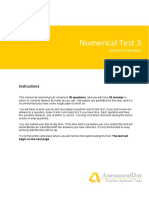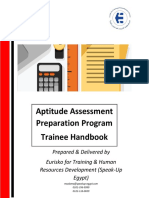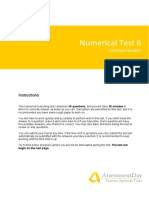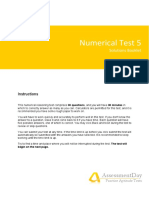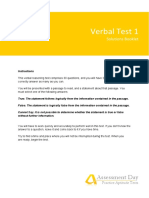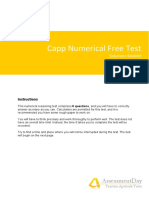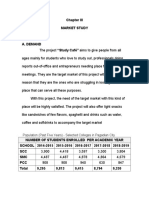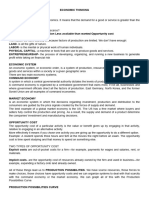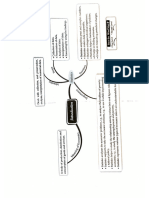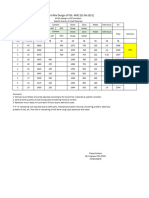100% found this document useful (1 vote)
1K views23 pagesNumericalCriticalReasoningTest3 Solutions
This document provides instructions and questions for a 20 question numerical reasoning test. It explains that each question has a time limit, with the first question for each table or graph having 90 seconds and subsequent questions having 75 seconds. It recommends finding an undisturbed place to take the test and then provides 6 sample questions and detailed step-by-step solutions to demonstrate how to correctly answer numerical reasoning questions involving tables, percentages, and multi-step calculations. The document aims to help test-takers practice and understand the thinking required to perform well on similar numerical reasoning assessments.
Uploaded by
sjCopyright
© © All Rights Reserved
We take content rights seriously. If you suspect this is your content, claim it here.
Available Formats
Download as PDF, TXT or read online on Scribd
100% found this document useful (1 vote)
1K views23 pagesNumericalCriticalReasoningTest3 Solutions
This document provides instructions and questions for a 20 question numerical reasoning test. It explains that each question has a time limit, with the first question for each table or graph having 90 seconds and subsequent questions having 75 seconds. It recommends finding an undisturbed place to take the test and then provides 6 sample questions and detailed step-by-step solutions to demonstrate how to correctly answer numerical reasoning questions involving tables, percentages, and multi-step calculations. The document aims to help test-takers practice and understand the thinking required to perform well on similar numerical reasoning assessments.
Uploaded by
sjCopyright
© © All Rights Reserved
We take content rights seriously. If you suspect this is your content, claim it here.
Available Formats
Download as PDF, TXT or read online on Scribd
/ 23


